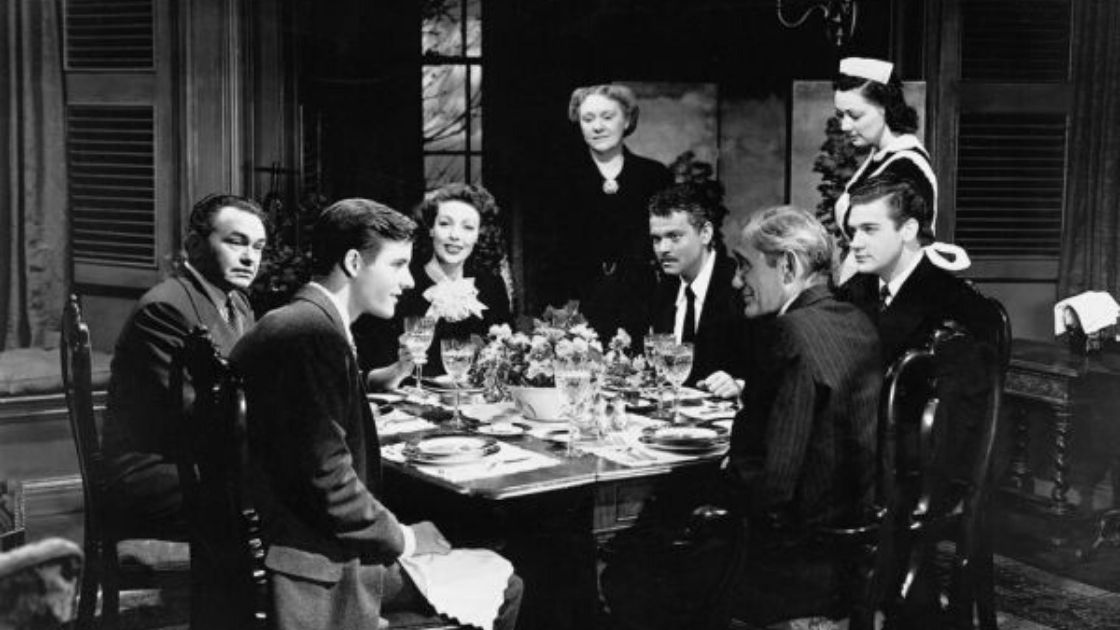Social distancing and just essentially not going out has created opportunities for catching up on movie watching. I’m partial to old, classic cinema and I’ve used this time sequestered to reacquaint myself with the genre. With the hope of perhaps staving off boredom and cabin fever for at least a couple of hours, I’ll be reviewing some of these classic films and sharing my thoughts with the Around Ambler faithful. I have no experience with films other than watching them, so my opinions have no real validation other than my own tastes. With that warning, I will review my first movie, the 1946 film noir, The Stranger, starring Edward G. Robinson, Orson Welles and Loretta Young.
Due to the current nature of our shared situation, I really didn’t want to watch a movie that had anything to do with sickness, isolation, lots of death or politics. Considering The Stranger had only a little of the aforementioned and still managed to hold my interest is a testament to the fine acting and gravitas found in the film. Those who are acquainted with movies from the ’40s will recognize two of the finest actors of that generation in Edward G. Robinson and Orson Welles, and both live up to their reputations. Robinson plays against type as Mr. Wilson, a war crimes commissioner tasked with tracking and bringing to justice the last remnants of the Nazi party and one, Welles, who has made his home in a small Connecticut town.
The United Nations War Crimes Commission is hunting for Nazi fugitive Franz Kindler (Welles), a war criminal who has erased all evidence of his existence, with the only clue about his identity being his maniacal love for clocks. Unable to find Kindler, Mr. Wilson (Robinson) releases Kindler’s former underling Meinike (Konstantin Shayne), hoping the man will lead him to Kindler. Wilson follows Meinike to the United States, to Harper, Connecticut, but loses track of him before Meinike before he meets with Kindler. Kindler known as “Charles Rankin,” is posing as a prep school teacher who is about to marry Mary Longstreet (Loretta Young), daughter of a Supreme Court Justice. Rankin also is repairing the 400-year clock in the belfry of the church in the town square.
When Kindler eventually meets Meinike, Kindler strangles Meinike, whom he fears could expose him. Eventually, Wilson deduces that Rankin is Kindler and that’s when the movie really begins…
Edward G. Robinson is a prototype 1940s gangster, famous for his portrayal of the heavy in movies like Key Largo and Little Caesar. A proud Romanian Jew born Emanuel Goldenberg, Robinson was one of the first in Hollywood to speak out against Nazism in the 1930s, so this role against type as Nazi hunter Mr. Wilson is poignant for the actor. He, as well as the audience, know early on that Rankin is Kindler; Robinson’s awesome performance as an earnest detective reminded me of a serious Colombo, and knowing the alter-ego doesn’t kill any of the suspense. Robinson’s Mr. Wilson is smart, savvy and gives the right amount of seriousness to the role that you feel the intensity of his desire to expose Rankin.
Welles, who also directed the film, is awesome as the villain. His range, in one breath playing a charming schoolteacher and in the next a murdering Nazi, is really on display in this film. Much of the suspense from the movie comes directly from Welles, whose eyes convey his emotions and intentions.
For some reason, The Stranger is in the public domain. I found it on Netflix but there are a few high-quality versions on YouTube. This movie is worth a view, especially if you are looking for escapism during your time in quarantine.

I give it four hand sanitizers out of five.

